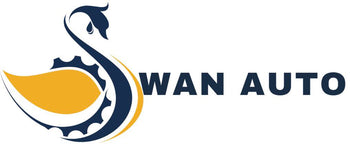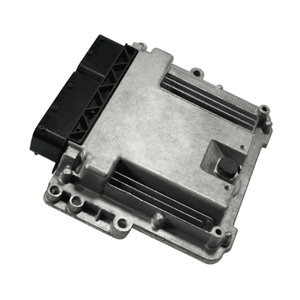Signs Your Powertrain Control Module Needs Repair
Signs Your Powertrain Control Module Needs Repair
-
Warning Lights: If the check engine light is on, it may mean there is a problem.
-
Poor Performance: If your car is not accelerating well, it could be a sign of trouble.
-
Unusual Sounds: Listen for strange noises from the engine. This may indicate an issue.
-
Fuel Efficiency: If you notice your gas mileage getting worse, it could be due to the module.
-
Stalling: If your car stalls often, it may be time to check the powertrain control module.
-
Transmission Problems: Issues with shifting gears can also point to a faulty module.
If you see any of these signs, consider having your vehicle checked by a professional
The PCM helps manage data from different sensors. This lets it make quick changes to the engine and transmission.
When the PCM works properly, it helps save fuel and reduce emissions. It does this by keeping the air-fuel mix balanced and timing right.
But if the PCM starts to fail, it can make random changes. This leads to poor engine performance and higher emissions. It can make your car harder to drive and cause it to fail environmental tests, which could mean fines.
One of the first signs that your PCM may be failing is erratic behavior in your vehicle's systems.
You may notice unforeseen changes in how your engine runs, like quick speeding up or slowing down, which can be both startling and hazardous.
Additionally, you may notice that your vehicle's dashboard lights behave inconsistently, flickering or to light up without reason.
What is a Powertrain Control Module?
The powertrain control module is an important part of modern cars. It combines the engine control unit (ECU) and the transmission control unit (TCU) into one system. Its primary function is to control the engine and transmission, ensuring optimal performance and fuel efficiency. It gathers data from various sensors throughout the vehicle to regulate ignition timing, fuel delivery, and emission controls.
Common Signs of a Faulty Powertrain Control Module
Understanding the signs of a failing PCM can help you catch issues early before they lead to more significant problems.
Check Engine Light
One of the most common indicators of a PCM issue is the illumination of the check engine light on your dashboard. While this light can signify numerous problems, a faulty PCM can be the root cause.
If the check engine light turns on, it's important to get your vehicle checked by a professional to find out what's wrong.
Engine Performance Problems
A malfunctioning PCM can lead to a variety of engine performance issues. You might notice a decrease in fuel efficiency, engine stalling, or rough idling. These symptoms can be sporadic and may worsen over time if not addressed.
Transmission Issues
Since the PCM also controls the transmission, you might experience shifting problems. This can manifest as erratic shifting, gear slipping, or difficulty in changing gears. Transmission issues can significantly affect your vehicle's drivability and should be examined promptly.
Poor Fuel Economy
If you see that your vehicle is using more fuel than usual, it might be a faulty PCM. The PCM regulates the air-fuel mixture and ignition timing, and any disruptions can lead to inefficient fuel use.
Starting Problems
A failing PCM can also lead to issues with starting the vehicle.
If the PCM cannot manage the engine's starting process well, you may have long cranking times or the engine might not start at all.
Diagnosing a PCM Issue
To diagnose a PCM problem, you need to do a complete diagnostic check.
This typically involves using a specialized diagnostic tool to read any error codes stored in the PCM. These codes can provide insight into what might be causing the issue and guide further inspection and repairs.
How to Fix a Powertrain Control Module
Resetting the PCM
In some cases, simply resetting the PCM can resolve minor issues. This involves disconnecting the battery for a few minutes, which allows the PCM to reset itself. However, this is a temporary fix and may not address underlying problems.
Repair or Replacement
If resetting the PCM doesn't fix the problem, you might need to consider professional repair or a replacement.
Repair involves fixing any damaged circuits or connectors within the module. If the PCM is beyond repair, replacing it with a new or refurbished unit is the best solution.
Professional Diagnosis
While DIY solutions can be tempting, professional diagnosis and repair are recommended for PCM issues.
Skilled technicians have the right tools and knowledge. They can find the problem and make sure your car runs safely and efficiently.
Preventive Maintenance Tips
To minimize the risk of PCM failure, consider the following preventive maintenance tips:
- Regular Inspections: Routine inspections can help catch potential issues early. Have your vehicle's electrical system checked periodically by a professional.
- Keep It Clean: Ensure that your vehicle's engine bay is clean and free of debris. Dirt and moisture can damage the PCM and other electronic components.
- Address Engine Issues Promptly: If you notice any engine performance issues, address them immediately. Ignoring these problems can lead to further damage to the PCM.
Conclusion
A well-functioning powertrain control module is essential for the smooth operation of your vehicle. Spotting the signs of a bad PCM early can help you avoid expensive repairs. It also keeps your vehicle reliable. If you suspect a problem with your PCM, seek professional assistance to diagnose and fix the issue promptly. Remember, timely maintenance and repairs are key to keeping your vehicle in top condition.
By knowing how your PCM works and watching for warning signs, you can keep your vehicle running well and make it last longer.






